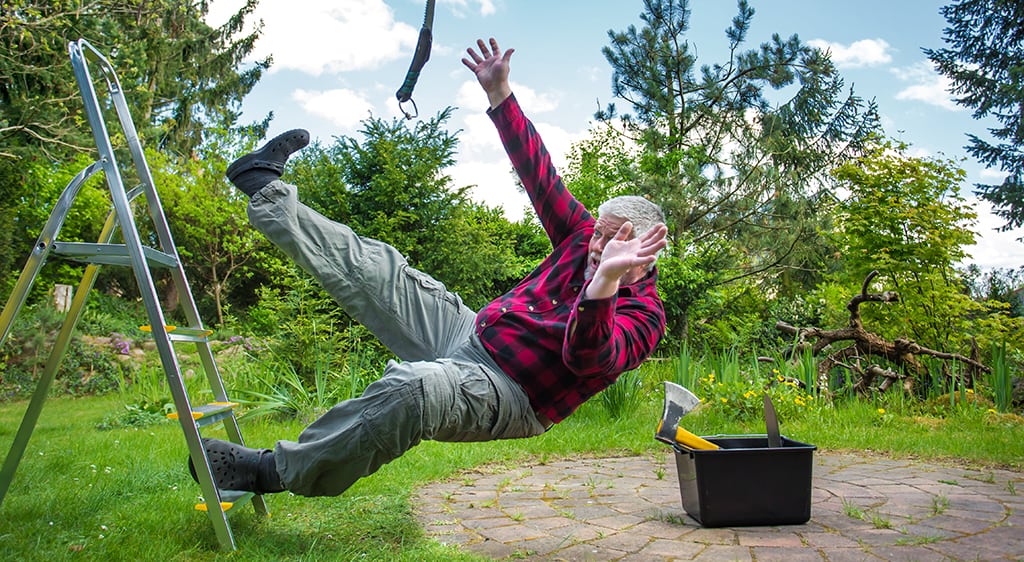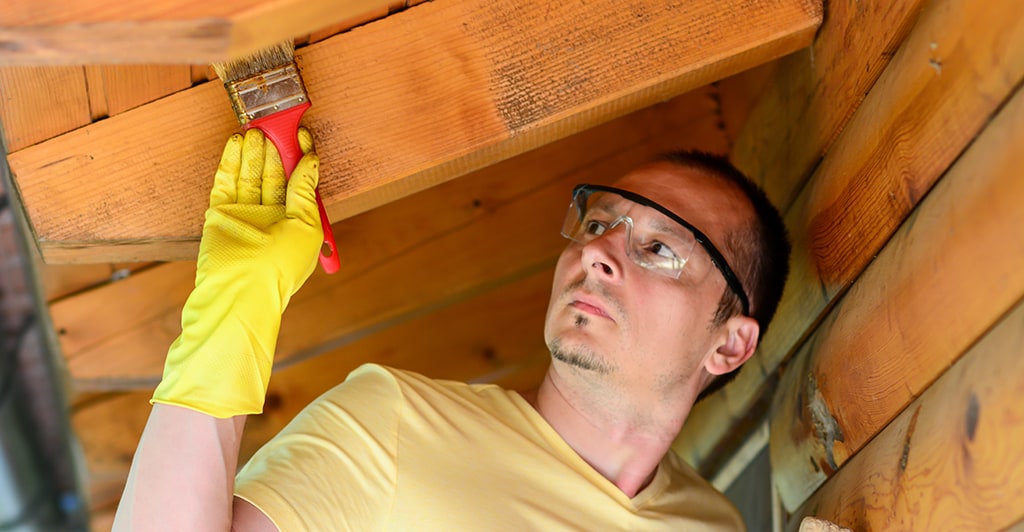
Gardening and DIY are two of the UK’s most popular pastimes, with almost 40% of UK residents reporting that they enjoy gardening, and DIY is still seeing a surge in popularity post-pandemic. While most projects in the home or garden go without a hitch, NHS and RoSPA statistics show an increase in DIY and gardening related hospital admissions year on year, with over 8,000 patients hospitalised in 2021 alone.
While some DIY and gardening related injuries can be serious, most can be prevented by taking basic safety precautions. Ensure your leisure time at home doesn’t become time spent in A&E by looking at some of the ways DIY and gardening can commonly go wrong, and how to prevent or treat common injuries with first aid.
When DIY and Gardening Go Wrong

According to statistics from the Royal Society for the Prevention of Accidents, the home is the most common location for an accident to happen. Even simple DIY activities like painting and decorating, putting up shelves and building furniture can end in accident and injury if proper precautions aren’t taken.
When working with common DIY and gardening tools like hedge trimmers and electric saws, the risk of injury greatly increases. Common injuries sustained while gardening or carrying out DIY tasks include slipping and falling from ladders, catching fingers on power tools, or acquiring a cut outdoors that later becomes infected.
Simple preventative measures can greatly reduce the risk of injury at home. Knowing what to do in an emergency and ensuring that your home first aid kit is properly stocked is paramount to ensuring you stay safe when working around the home or in the garden.
10 Tips to Avoid DIY and Gardening Related Accidents

DIY related accidents
1. Keep children out of harm's way
1 in every 100 hospital admissions relating to a power tool injury in 2021 was for a child aged between 0 and 9 years old, highlighting how important it is to keep children well supervised when potentially dangerous machinery is being used. Ideally, children should be entertained and supervised far away from the task at hand. Tools like lawnmowers, drills and saws should be kept out of reach of children and should never be left unattended.
2. Disconnect all electrical appliances before attempting to clean or repair them
Attempting to fix or clean potentially dangerous machinery while it is still plugged in can lead to serious injuries. If any machinery stops working, ensure you unplug it before investigating what the problem is.3. Do not use power tools if you have drunk alcohol or if you are drowsy
The risk of injury from power tools greatly increases when you are under the influence of alcohol or if you are feeling drowsy from taking medication. Refrain from starting any DIY activities under these circumstances.4. Always check your ladder before use
Most DIY accidents are ladder related. Lower the risk of an accident by checking whether a ladder is fit for use beforehand. If rungs, feet or stiles are bent, damaged or missing, avoid using the ladder. Also ensure that the ladder is placed on a secure and level surface and is resting against a solid wall.
5. Use the appropriate personal protective equipment
Identify what protective equipment is appropriate for the DIY task you are undertaking, and ensure you are using it properly. For example, you may need to wear protective gloves, a helmet and/or goggles.Gardening related accidents
1. Protect yourself from harsh sunlight and stay hydrated
Gardening is most popular during the summer, and as summer temperatures continue to reach record highs, proper hydration and the usage of sunblock is becoming even more important. Carry a bottle of water with you while working in the garden, and sip continuously to keep yourself hydrated while you work. Apply sunscreen and wear a gardening sunhat to avoid UV exposure as much as possible.
2. Use gardening equipment safely
The improper usage of equipment is a common cause of gardening-related injuries. Always wear the appropriate clothing and protective gear when operating machinery such as lawnmowers, edgers, and hedge trimmers. Wear closed-toe footwear, long pants, and safety goggles. Remove any rings before operating machinery to prevent ring avulsion.Always use a tool (never your hands) to clean a lawnmower and ensure that the lawnmower is turned off completely before attempting to clean or clear debris. Always unplug any electric gardening machinery before attempting to repair or clean it.
3. Beware of cuts and scrapes
Small cuts and scrapes happen easily while gardening, and soil contains bacteria and fungi that, while good for plants, can be very harmful to people. There is a high risk of contracting serious infections like sepsis or tetanus through cuts acquired while gardening.
If you receive a cut or scrape while gardening, watch for any of the following symptoms. If you experience any of these, seek medical attention as soon as possible:
- Swollen lymph nodes
- Redness or warm skin around the site of the cut
- Redness that expands beyond the site of the cut
Keep in mind that redness may be harder to see on darker skin tones.
Cuts and scrapes can happen anywhere on the body; be sure to wear gloves, long sleeves, long trousers and closed-toe footwear while gardening.
4. Lift objects carefully and avoid repetitive motions
Prevent injury by using proper technique when lifting heavy objects and using a wheelbarrow to move heavier loads. Use your legs when lifting, and never bend at the waist.Avoid sitting back on your knees while gardening, as this stresses the knee joints and forces you to use your hands and wrists to stabilise. Instead opt for the use of a garden stool or bench. Avoid extended periods of repetitive motions, as they can stress your muscles and tendons leading to tennis elbow or tendonitis.
5. Take care when using chemicals
Always take the proper precautions while using pesticides and other potentially dangerous gardening chemicals and ensure that they are properly stored away from pets and children when not in use.Takeaway
The home is the most common location for an accident to happen, and activities like DIY and gardening increase the risk of injury further. Ensure these popular pastimes stay safe and enjoyable by taking the proper precautions.Learn more about how to prevent common DIY injuries on our blog, and ensure your home first aid kits are properly stocked so you’re always ready in the case of an emergency.
About the author:
Jo Stokes is a writer, marketer and trained first aider at First Aid Online.
Find out more about Jo.
By Jo Stokes
Explore more: Home first aid & safety

